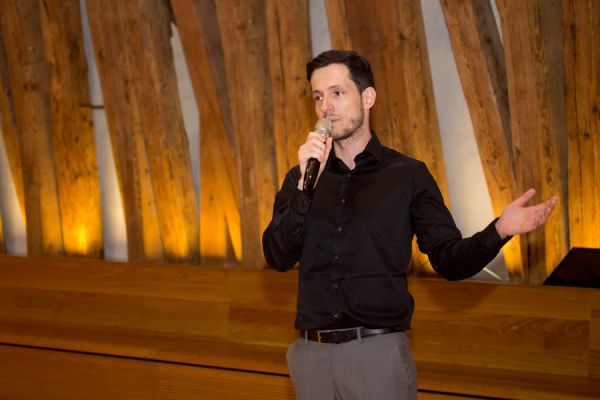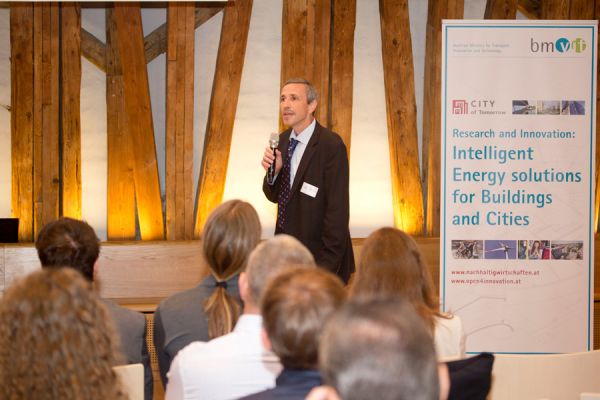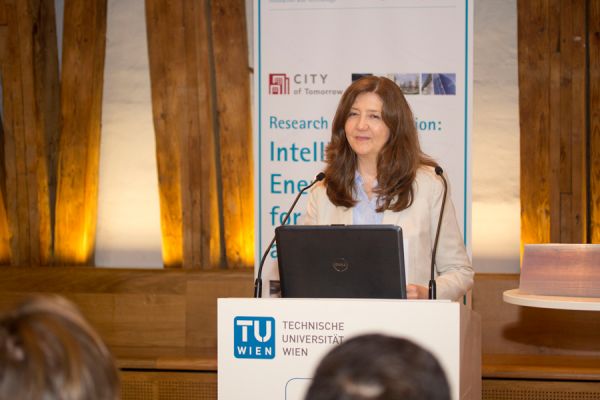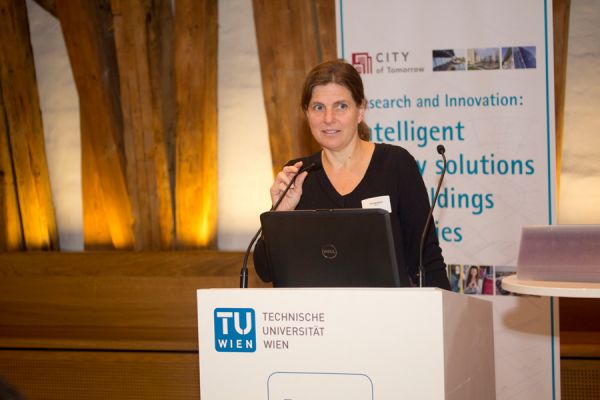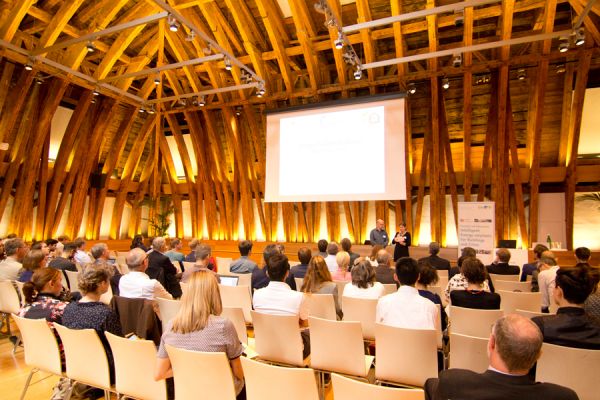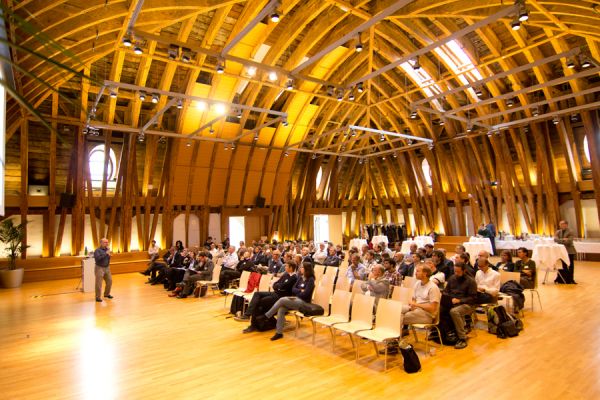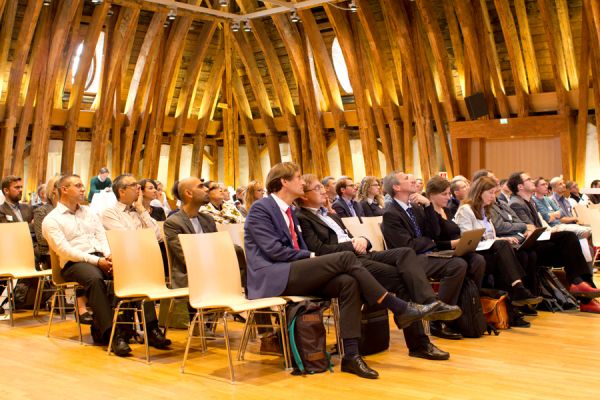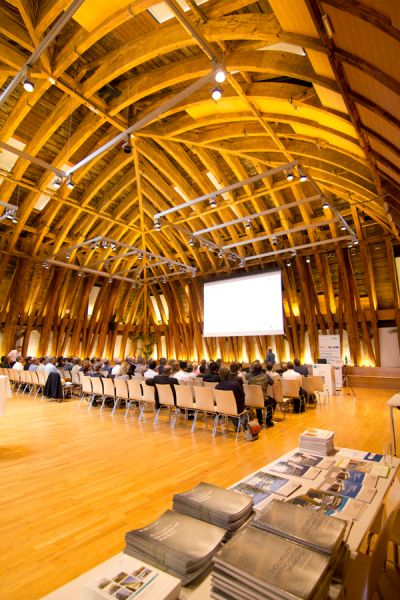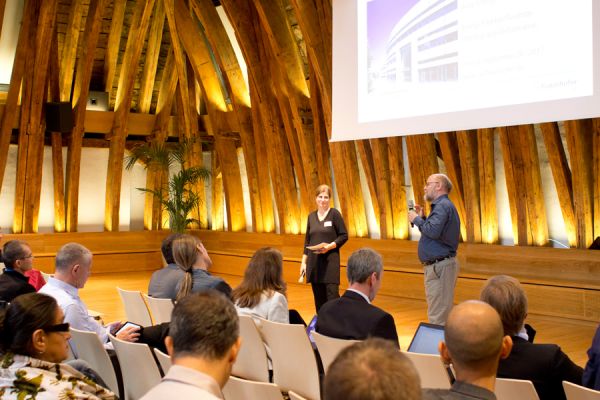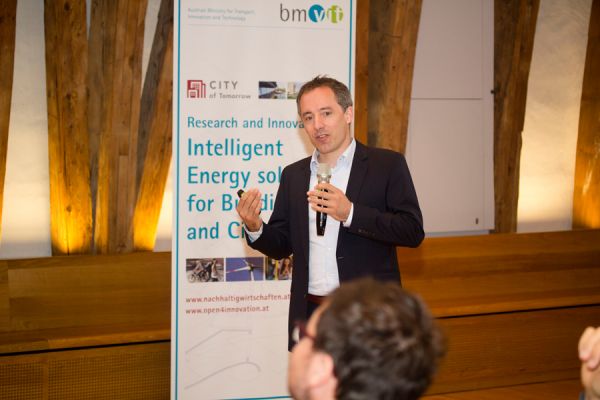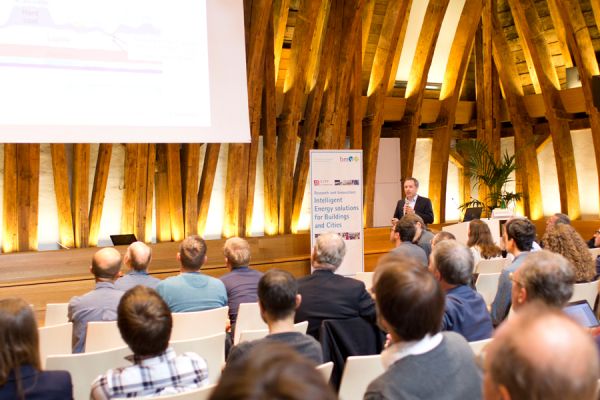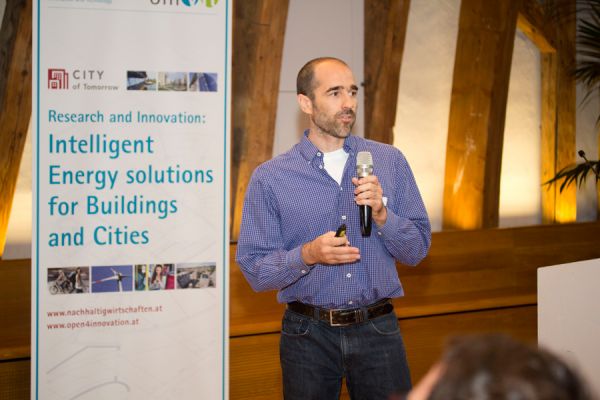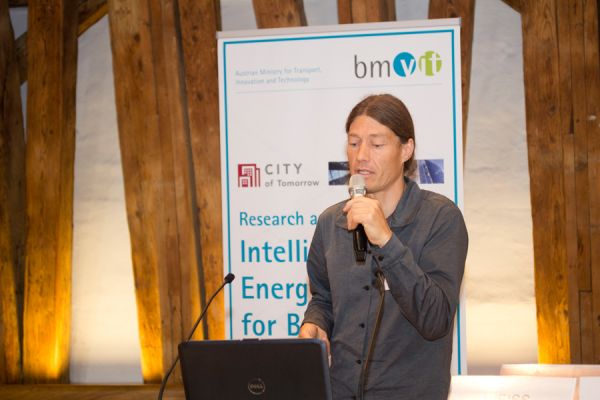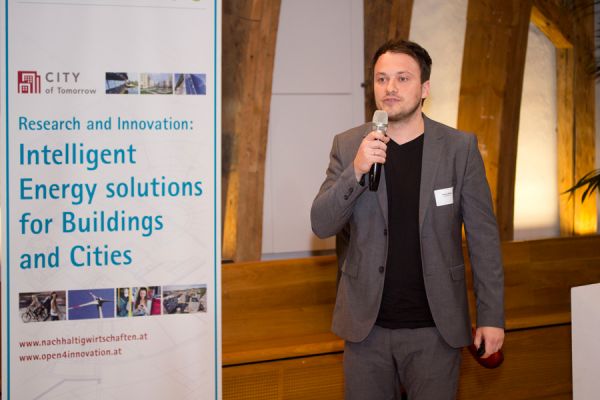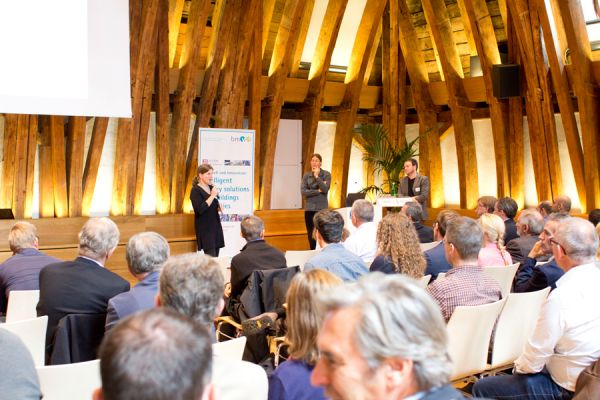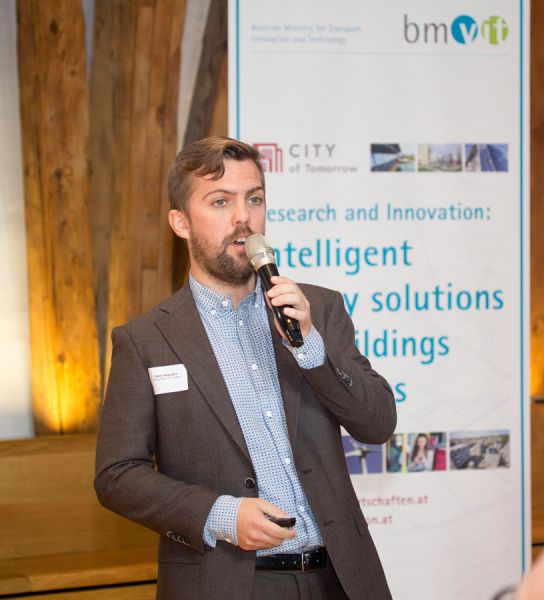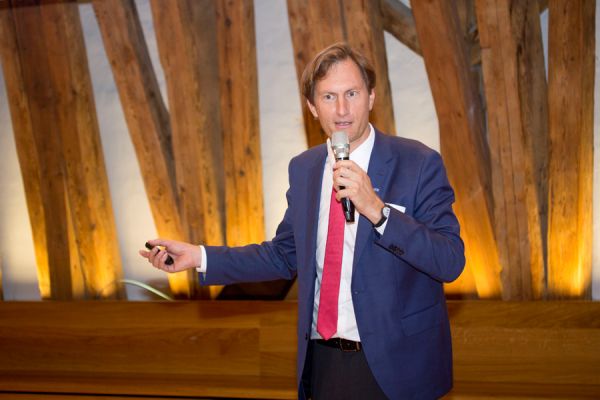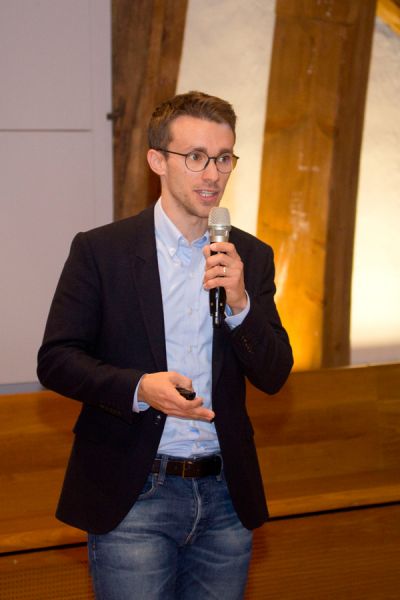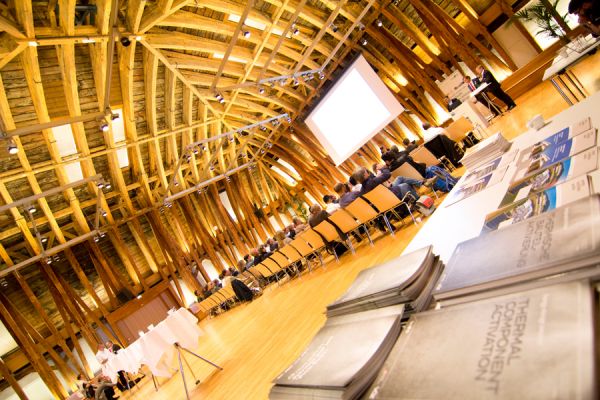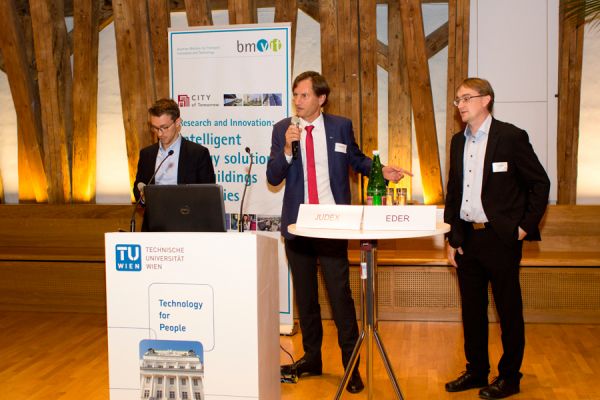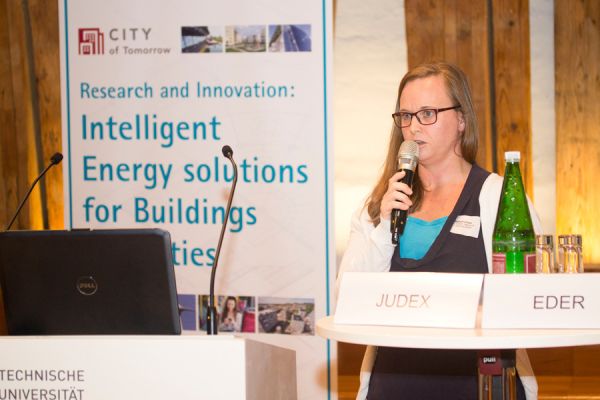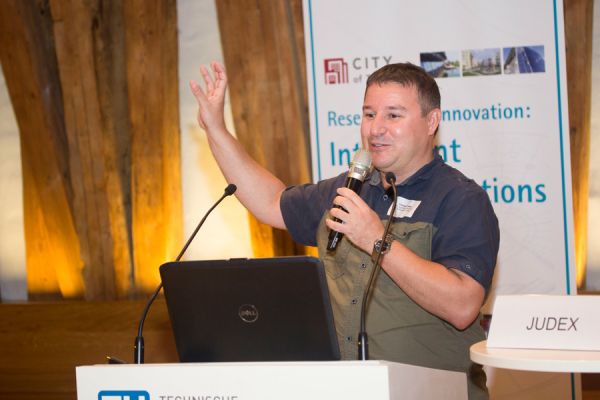Energy Flexible Buildings – Potential and Performance
Organizer
BMVIT together with TU-Vienna and AEE Intec as part of IEA-EBC Annex 67
Documentation
- Results from the Danish iPower project – what can we learn for Annex 67
Søren Østergaard Jensen, Operating Agent of IEA EBC Annex 67, Danish Technological Institute
Presentation 1: Energy Flexible Buildings - IEA EBC Annex 67
Presentation 2: Results from the Danish iPowerproject – what can we learn for Annex 67? - Grid Supportive Buildings: How "grid friendly" are buildings today? Case studies from Germany
Peter Engelmann, Fraunhofer ISE, Germany - Building to Grid: Experiences from an Austrian Innovation Project
Robert Hammerling, Aspern Smart City Research - The potential of energy flexibility based on the Austrian building typology
Armin Knotzer/ Tobias Weiss, AEE INTEC - Thermal mass of dwellings as a source for energy flexibility
Glenn Reynders, KU Leuven, Belgium - Concrete structures in a single-family-house used as micro-energy hub for surplus wind power – How science, sectoral cooperation and practical experience contributed to creating a planning guide
Sebastian Spaun, VÖZ, Roman Prager, WEB AG - Buildings as energy storage for the grid – example of a multifamily home in Vienna
Simon Handler, ALLPLAN GmbH - PEAR – energy efficient automation and control of buildings
Katharina Eder und Florian Judex, AIT
Content Description
This workshop in Vienna is organized in the run-up of the 5th working meeting of the IEA EBC Annex 67 Energy Flexible Buildings in Graz.
Heating and electricity consumption on demand – at building level
This event is one in a row of the City Of Tomorrow in Practice workshops, where relevant research and development results are presented and discussed with experts and professionals. Along the City of Tomorrow programme of the Austrian Ministry for Transport, Innovation and Technology, new technologies and innovations should pave the way for an altered understanding of future working and living within cities in combination with mobility and production, making cities an attractive place to live while being energy efficient at the same time.
In the future, the high share of renewable energy sources in electrical power and district heating grids will force the transition from a purely demand-oriented energy production ("generation on demand") to a production-oriented demand respectively consumption ("consumption on demand"). This is also rational and necessary for the promotion of more accurate direct use of short-term predictable yet not time-controllable renewable energy production from e.g. wind or solar power, as well as solar thermal systems. It will relieve the grids and storage requirements likewise.
The adaptability of buildings to currently available energy supplies, their "energy flexibility" in respect with load balancing of the grid, is hard to quantify at this point in time. Indicators and a methodology for quick characterization of a building regarding such flexibility do not exist. The potential for energy flexibility in buildings is determined by factors like heat storage capacity of building components, quantities and sizes of thermal storage tanks and batteries, quantities and type of electrical devices and consumers such as heat pumps, the specifically utilized control systems, and similar.
Intelligent use of related equipment enables to shift peak loads and discharge the grids at the right time. In this spirit, buildings could be intelligent "prosumers" (consumers AND producers of energy). The aim of the EBC Annex 67 is to evaluate, analyze and characterize this future role of energy-flexible buildings integrated with renewable energy systems. Ongoing studies in the field will be presented and discussed.
Program
Moderation: Claudia Dankl, ÖGUT – Austrian Society for Environment and Technology, Working Group "City of Tomorrow"
- 10:00 Registration and networking with coffee
- 10:30 Welcome
Theodor Zillner, Austrian Federal Ministry of Transport, Innovation and Technology (BMVIT)
Wolfgang Kastner, A.Susanne Metzger, TU Wien ASG/ Armin Knotzer, AEE INTEC - 10:45 Results from the Danish iPower project – what can we learn for Annex 67
Søren Østergaard Jensen, Operating Agent of IEA EBC Annex 67, Danish Technological Institute - 11:15 Grid Supportive Buildings: How "grid friendly" are buildings today? Case studies from Germany
Peter Engelmann, Fraunhofer ISE, Germany - 11:40 Building to Grid: Experiences from an Austrian Innovation Project
Andreas Schuster, Aspern Smart City Research - 12:05 The potential of energy flexibility based on the Austrian building typology
Armin Knotzer/ Tobias Weiss, AEE INTEC - 12:30 Lunch Break
- 13:30 Thermal mass of dwellings as a source for energy flexibility
Glenn Reynders, KU Leuven, Belgium - 13:50 Concrete structures in a single-family-house used as micro-energy hub for surplus wind power – How science, sectoral cooperation and practical experience contributed to creating a planning guide
Sebastian Spaun, VÖZ, Roman Prager, WEB AG - 14:10 Buildings as energy storage for the grid – example of a multifamily home in Vienna
Simon Handler, ALLPLAN GmbH - 14:30 PEAR – energy efficient automation and control of buildings
Katharina Eder und Florian Judex, AIT - 14:50 Conclusion and Outlook
Claudia Dankl, ÖGUT - 15:00 Coffee Break and networking
- 15:30 Start of the technical visit / short bus tour Vienna
16:00 AIT (SmartEST Laboratory) / ENERGYbase
17:30 Plusenergy Office Building TUW
18:30 End of the technical visit (start of the bus ride to Graz City Centre for participants of IEA EBC Annex 67)
Downloads
Contact Address
ÖGUT – Austrian society for environment and technology
Claudia Dankl
Hollandstrasse 10/46, 1020 Wien
Tel.: +43 (1) 315 6393-24
E-Mail: office@HAUSderZukunft.at
AEE - Institute for Sustainable Technologies
Department: Building and Retrofit
Armin Knotzer
Feldgasse 19, 8200 Gleisdorf
Tel.: +43 (3112) 5886-369
E-Mail: a.knotzer@aee.at

